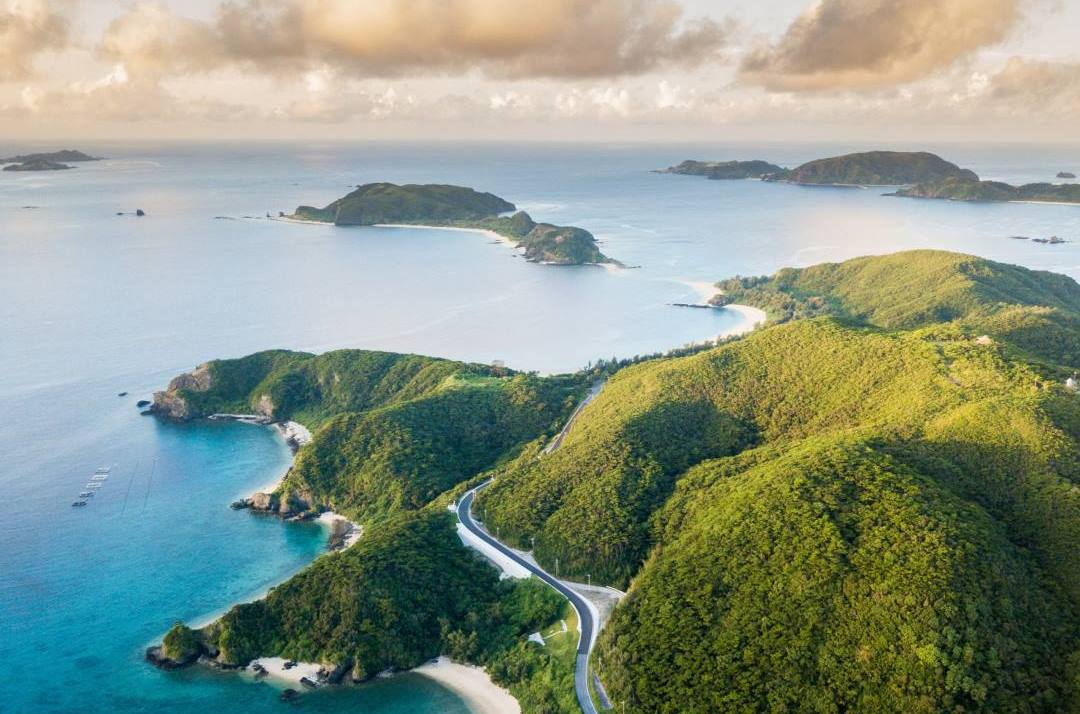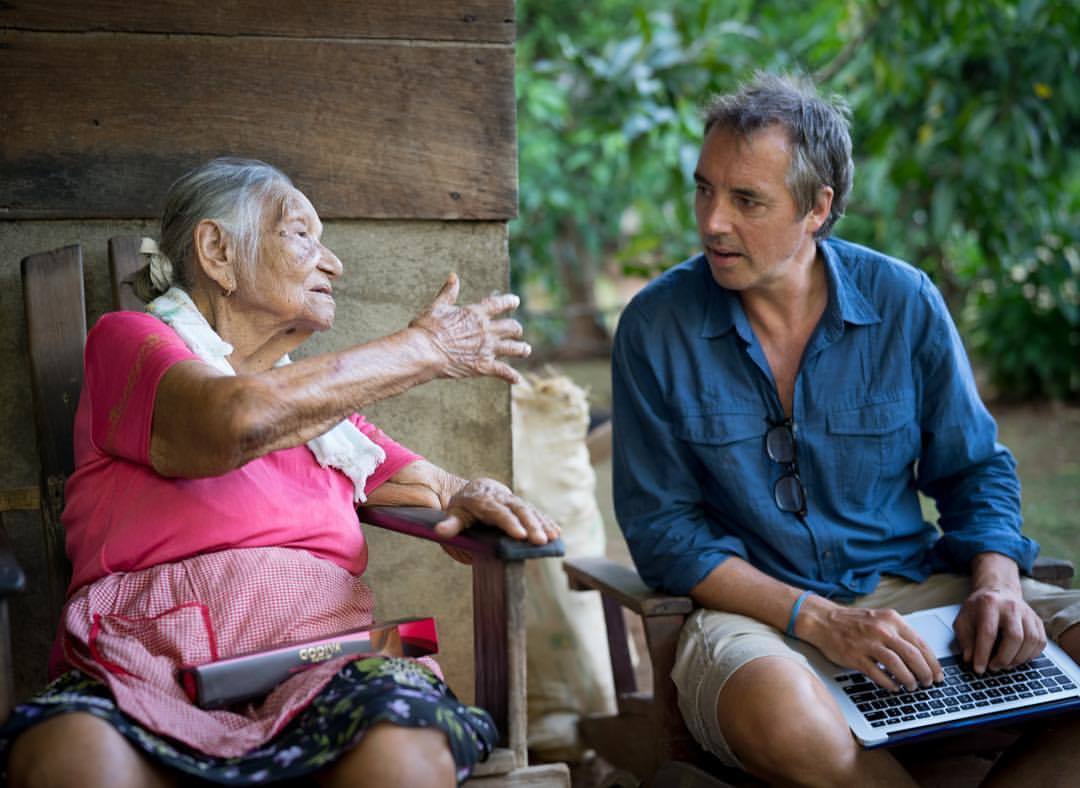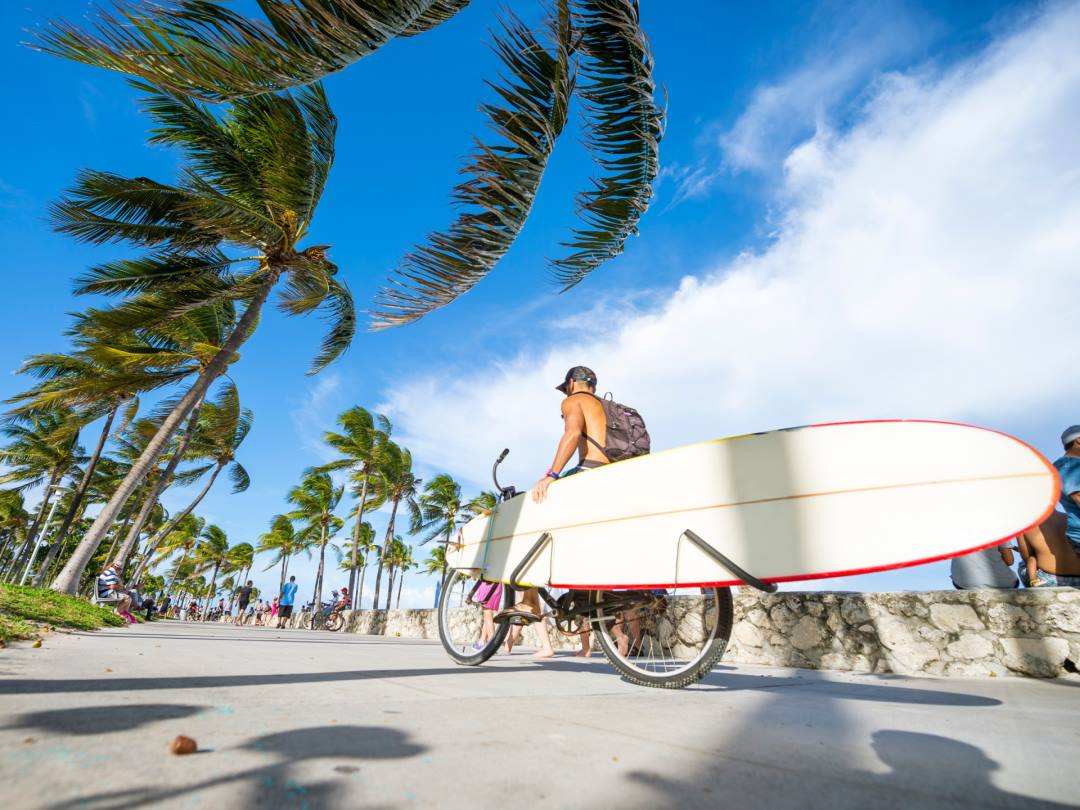Dan Buettner uncovered the five places in the world where people live the longest, healthiest lives, and wrote a book about it called The Blue Zones that changed the way we think about longevity, diets, exercise plans, and where we live. He’s also an explorer, National Geographic Fellow, New York Times bestselling author, and an award-winning journalist and producer, with a new book out called The Blue Zones: American Kitchen. The day we were scheduled to speak by phone, he was traveling, and his car had gotten a flat tire, so he was stuck waiting for a tow-truck. We had time to really dig into his work and the vast and lasting impact he’s made and is still seeking to make on our health by altering the basic mechanics of our daily lives. He’s now working with municipal governments, large employers, and health insurance companies to implement Blue Zones Projects– well-being initiatives that apply lessons from the Blue Zones to entire communities by focusing on changes to the local environment, public policy, and social networks. The program has dramatically improved the health of more than 5 million Americans to date.
Our conversation, below, has been edited for length and clarity
Anne Talk to me a little bit about your origin and how you came about the Blue Zone project. What is it about you or where you come from that you think set you on this path?
Dan Well, like the hero’s journeys, you start with a goal in mind and then along the way you have an epiphany and you sometimes take a right turn and then another right turn, and pretty soon you end up in a place you never thought you’d land. Out of college, I set three world records for biking across five continents, and thought that exploration was my calling. But I realized at a certain point that the idea of just going someplace or crossing a continent or topping a mountain or going deep in the sea was almost a trite 20th century idea. And it was actually an editor at National Geographic, Peter Miller, who said that expeditions have to either add to the body of knowledge or illuminate the human condition. And that stuck really deeply, lodged in my psyche. So then I organized a series of other expeditions that combined the wisdom of the crowd. We let an online audience vote to direct a team of experts to solve mysteries. And I organized about 15 of these quests which solved mysteries, like Why did the Maya civilization collapse? Did Marco Polo really go to China? Where are the origins of Western civilization? And we generated huge audiences. It worked really well because it put the armchair adventurer in the lead, and we actually listened to what they said and where they told our team to go.
 The islands of Okinawa, Japan, one of the original Blue Zones.
The islands of Okinawa, Japan, one of the original Blue Zones. Anne I had no idea.
Dan But then in 2000, I stumbled on this report by the World Health Organization that found that Okinawa, Japan had the longest disability-free life expectancy in the world. And I knew enough about Okinawa to know it was a heterogeneous population and they weren’t living a long time because they had better genes. So, it really suggested an expedition, much like the ones I’d been doing: a great mystery to solve. And once again, we opened it up to an online audience, recruited a team of experts, and we went to try and unpack it. I noticed that that one had about triple the interest and web traffic than anything else we did. And I came back from that expedition and pitched National Geographic on the idea and got a grant from the National Institutes on Aging to do demographic work. I reasoned if there was a longevity hotspot in Asia, there must be ones in Europe or Africa or South America or North America. We spent two and a half years with a small team of demographers. And we found the other four Blue Zones. And that’s what launched us.
Anne Unbelievable. It’s such a valuable body of work and continues to be. And I’m so grateful in my own life for what I’ve learned from it. How do you espouse the principles that you learned? Did you change anything in your own life or adopt your own behavior?
Dan Yes. The general principles are they’re eating peasant food, a whole-food, plant-based high complex carb diet. They know their purpose and live it. They’re surrounded by people. Their social environment is one that enables them to thrive, and their food and built environment also subtly architect their choices day by day for decades. So, the key insight for anybody who wants to live longer is to realize that your habits and your discipline and your own sense of individual responsibility will fail for almost all people almost all the time in the long run. If you look at the research, it’s so clear, you can even just do a Google search to see how long the best diets last and how long the best exercise program works. They all fail for all but fewer than 5% of people. And you have to remember, when it comes to longevity, there’s nothing you can do this year to make you live another 10 years at the end. You have to do the right things and avoid the wrong things for decades. And we’re just not hardwired that way. We’re hardwired for novelty and we’re besieged by hundreds of messages that rinse over our psyche every day. So that leads us necessarily to the key insight from Blue Zones that shaping your environment, shaping your surroundings, is the only chance we really have.
Anne So, following the initial success of The Blue Zones, how did you come to this idea that you could create Blue Zones systematically in American cities and counties?
Dan Well after 10 years or so, looking for the factors that explained longevity in these five Blue Zones and the common denominators, the organizing principle kind of occurred to me in an Aha moment. And that is that none of these people are pursuing health and longevity. None of the crap that we spend money on– they’re not on diets or exercise programs. They just live their lives, and they live manifestly longer without disease. And the Aha moment was, they do so because they live in an environment where their unconscious choices are subtly architected for them throughout the day. They unconsciously move every 20 minutes because they live in places where, every time they go to work or a friend’s house or out to eat, are occasions to walk. They have gardens out back, so they’re weeding and watering and harvesting and planting. Their houses aren’t full of mechanical conveniences. They’re doing a lot of work that we rely on tools to do. The cheapest and most accessible and, because they know how to cook it, the most delicious food for them is whole-food plant-based– beans and grains and nuts and tubers. The kind of stuff that’s sits on the bottom of the grocery shelf, that’s really cheap. They know how to make that peasant food taste delicious.
They have a sense of purpose that kind of comes with their culture. So they’re not sitting around stressed out, essentially, about what are they going to do with their life. They wake up knowing what their responsibility is. Their sense of purpose metabolizes responsibility. It’s not just, “Oh, I’m going to pursue the cello now.” It tends to be something that is going to help their community or help youth or help older people. It’s purpose and responsibility metabolized into one idea. So, the option to be lonely, which is an epidemic now in the United States, isn’t there. They almost always live with their big extended families, and they live in places where they’re bumping into neighbors all the time.
So if they don’t show up to church or temple or they don’t go to the festivals, they get grief from their neighbors. So they’re nudged into social participation at much higher levels than we are. And the scourge of the handheld device hasn’t completely overtaken their lives. It’s starting to, but they’re not, they’re not imploded into their device. So, all these things add up in subtly powerful ways to moving more, eating the right food, socializing, living a rich life on purpose. These are all things that tie very easily to longevity, to living longer. And they do these things unconsciously, without relying on heroic discipline, or a CrossFit membership, or remembering to eat the right diet or weigh your food. So that’s a big idea.
And based on that big idea, when, in 2009, I started the idea of manufacturing a Blue Zone, I wanted to build it around ubiquitous nudges and defaults based on that observation, where people living in a Blue Zone city would mindlessly move more and eat better.
Remember, we’re not trying to convince people to change their behavior, we’re trying to architect their decisions. So you’re nudging people into moving more, eating, better, socializing, connecting, and living your purpose. So we created a Blue Zone Certification program for all the aforementioned places. And we have a team that, for five years, does nothing but fan out through the city to try to get about half of all places Blue Zone Certified.
Anne And what’s been the most surprisingly easy and or hard thing about the process of convincing people or implementing successful policies.
Dan I’d say the hardest part in general, is that there are so many billions of dollars poured into advertising to us that the secret to health is through a pill, an exercise program, or a diet, that when you come with this counterintuitive idea that, well, none of those really last, they may work in the short term, but they fail in the long run. This is the way that works in the long run. So getting people and the teams that we hire to stay focused on optimizing people’s environments and getting them to understand the incredible power that once you set this up comprehensively, it just works. I’ve been surprised though, as well, how easy it’s been. In many cases, cities have done huge things around a Blue Zone effort that you would never get them to do around anything else. To redesign their streets, which is not necessarily increasing their transportation budget, but in many cases, reallocating tens of millions of dollars.
If you come in and you start talking policy with people, their eyes glaze over, but we have these town hall meetings, where we say, we brought our experts into your city. And here’s what it looks like. There are dangerous intersections. It’s impossible to walk from this neighborhood to school. And then we do what we call photo morphs, where we show what it could look like. And all of a sudden there are trees, there’s a bike lane. There’s a wide sidewalk. There’s a center aisle in the street where there’s greenery.
And then we say to them, What environment would you like to live in? What environment do you want your kids to grow up in? And once they can see it, then it’s pretty easy.
Anne So basically, the secret is to make it easy for yourself to fall into good habits.
Dan Yes, and even more permanently, I would argue, we know that the three or four friends you spend the most amount of time have a measurable impact on your habits. It’s measurable. A guy named Nicholas Christakis did this work. If your three best friends are unhealthy and obese, there is 155% better chance that you’ll be overweight. Every new happy person you add to your immediate social circle increases your own happiness by about 15%. So why not take all the effort and time that go to getting on the next diet or showing up to CrossFit for a year, and instead really try to make a new friend whose idea of recreation is playing pickleball, or doing a morning walk, and who cares about you on a bad day. It’s not a bad idea to have a vegetarian or vegan in your immediate social circle, so they teach you how to eat this whole-food plant-based diet. That’s what works.
 Dan Buettner conducting an interview in the field.
Dan Buettner conducting an interview in the field.
Anne And how do you engineer purpose? To me that seems like one of the hardest ones. And engineering your social circle to be more positive. How does one decide to find a healthier social circle?
Dan Well, the first step is to be conscious of how important health is to you, and how much you’re willing to invest time and money and effort, and take that amount of time and effort and realize what works for the long run. So, let’s go with purpose first. When I say purpose, I mean the intersection of what your values are, what you’re good at doing, what you like to do, and where there’s an outlet. America’s a terrible place to find your purpose at work. According to one poll, only about 31% of people actually find purpose at work. So that means for most Americans it’s either change your job, which by the way, is not a bad thing to consider, or utilize your free time. One of the best ways is through volunteering. Altruism tends to be addictive. It stimulates the same neuropathways as sugar and even cocaine does.
Anne You’re kidding.
Dan There’s research that shows this. You get this endorphin buzz when you do good for others and it’s addictive. It’s like trying heroin for the first time. You might get hooked, but it’s a good addiction. So, rather than showing up at the gym, why not show up, if you love dogs, at the Humane Society, and walk dogs? You have to do the exercise of finding the intersection of those four elements I told you about, and once you find that, then it becomes fairly easy math. It’s counterintuitive, but Robert Butler from the National Institute on Aging, looking retrospectively at people’s lives, found that people who had a strong sense of purpose were living about eight years longer than people who didn’t.
And as for the friends, I’d argue, it’s not as hard as you think. First of all, you know, Robin Dunbar found that most people have about 150 other people they know, that they’re at least
familiar with. They have about 15 people in a friend circle—that means they’re good enough friends where you keep in touch with them, and you have an affinity with them. Then we all have about five people in that really inner circle. So, taking time to curate that circle, and think about who, maybe it’s just in the sphere of 15 people, which ones of those people meet this healthy criteria, and be proactive. You don’t even have to go out and necessarily make a brand new friend. The first place to start is with who you already know. You know, you probably have a dozen great friends, but maybe that one friend gets a little bit more time in your calendar and more effort and reaching out. It’s counterintuitive, but it is phenomenally powerful over time.
Anne Did you change anything in your life after you found out all the things you found out about the best easy to live?
Dan I own three houses and they’re all in walkable communities. I have a bicycle at every one. There are a number of friends who, while I didn’t defriend them from my life, they don’t hear from me very often. And I really have consciously gotten closer to the people who give me the right influences. I’ve learned a half a dozen rockstar, delicious recipes. Most of them involve beans, and I pay maniacal attention to deliciousness. I make them all the time.
 The ability to walk or bike to daily activities is a key element of the Blue Zones.
The ability to walk or bike to daily activities is a key element of the Blue Zones. Anne Okay. I need to get those. And did you change where you lived? Did you move to a different place once you learned about the principles of the Blue Zone?
Dan I didn’t move immediately, but you know, the average American moves 10 times in their adult life. So the next time I moved, I moved to a walkable neighborhood in Santa Barbara with great neighbors. They all biked, they did happy hour together, they were all pretty healthy. And when I moved to Florida, I moved very intentionally to South Beach, where it’s super walkable and there’s easy access to recreation and a lot of great plant-based foods down there too.
Anne How was your pandemic?
Dan Well, during the pandemic, a National Geographic photographer and I started in Maine, went all the way to Miami, then new Orleans, Texas, Minneapolis, California, all the way to Hawaii. The standard American diet kills about 750,000 Americans every year. That’s according to the CDC, by the way. It’s the most lethal export we have, and it’s driving about 80% of our 3.6 trillion healthcare costs. 72% of us are obese, and it wasn’t always like that. I hired an NYU researcher and we found about 80 different studies done between 1890 and 1920. My ancestors, central European and Scandinavians, arrived here with their pigs and cows and chickens, and they didn’t necessarily have the healthiest diet, but it turns out there were four ethnicities that were essentially eating a Blue Zone diet, which is to say whole plant-based food, meat used as a celebratory food, and very little sugar. And they were among the African Americans, the Asians, the Latins and the Native Americans. We know exactly what they were eating, and it maps exactly over a Blue Zone diet. So we found historian chefs to recreate those meals, and I just produced a book. It’s going to be called The Blue Zones, American Kitchen, and I unpacked this little known American diet.
Anne Well I can’t wait to read it. Thank you for your time, Dan. It’s been a pleasure.



